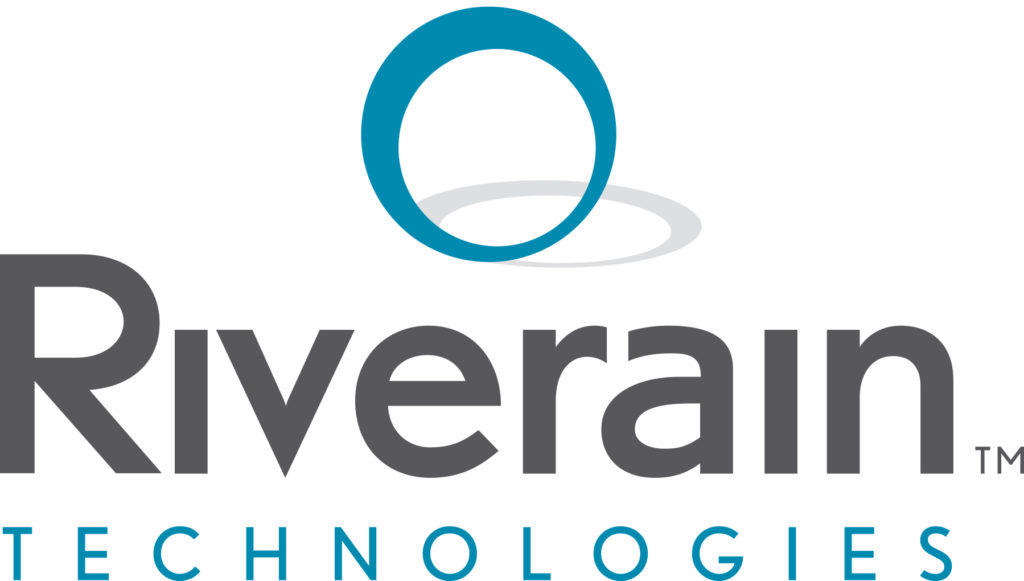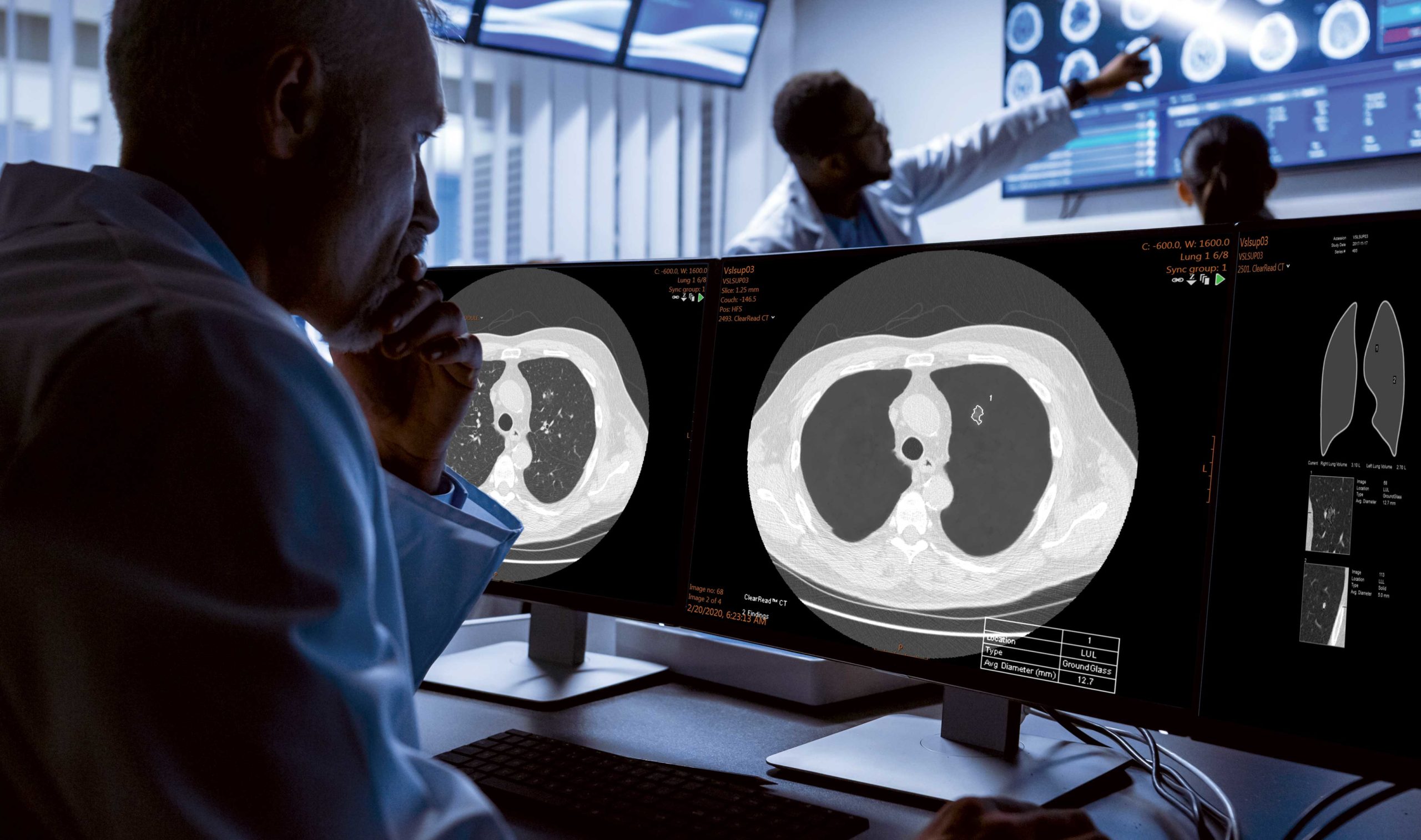Riverain Technologies™ ClearRead™ solutions harness artificial intelligence (AI) to help radiologists be more efficient and maintain high accuracy. The company's FDA-cleared applications can be accessed through the Nuance AI Marketplace for Diagnostic Imaging and are being integrated into Nuance PowerScribe reporting solutions, connecting 7,000+ healthcare facilities through its PowerShare platform.
To address the challenges of early detection of abnormalities within the lungs, Riverain Technologies has designed advanced AI imaging software that is now being used by leading healthcare organizations around the world. The software significantly improves a clinician’s ability to accurately and efficiently detect disease in thoracic CT and X-ray images. In this blog, Steve Worrell, chief executive officer of Riverain Technologies, shares his thoughts about their mission and the impact that Riverain solutions are having on the practice of radiology and patient care.

Q&A
Jonathon Dreyer: Tell us about your business – when and how you started and your development journey.
Steve Worrell:
Riverain Technologies is a leading provider of healthcare AI tools marketed under the ClearRead brand. The company’s software helps to improve the detection of lung diseases and other clinical conditions.
The patented, FDA-cleared solutions that make up the ClearRead suite are deployable in the clinic or in the cloud and powered by the most advanced AI methods available to the medical imaging market. Our solutions are relied upon by leading healthcare institutions, including Duke University, Mayo Clinic, University of Chicago, University of Michigan, Veterans Affairs hospitals, and radiology reading groups.
[JD]: What AI models do you have and what do they do?
[SW]: Our flagship X-ray product, ClearRead Xray Bone Suppress, received FDA clearance in March 2010. Our latest product, ClearRead CT, uses deep learning technology and received FDA clearance in September 2016. It is the first concurrent-read, vendor-neutral AI application supporting all nodule types.
ClearRead CT is a transformative, concurrent-read AI product that automatically detects and measures properties of solid, part-solid, and ground-glass nodules by leveraging patented vessel suppression technology. It has a demonstrated capability to improve efficiency (26% reduction in nodule search time) and accuracy (29% reduction in missed nodules). ClearRead CT modules include:
- Vessel Suppress: Suppresses normal structures in chest CTs, providing radiologists an unobstructed view of actionable lung nodules.
- Detect: Obtains highly accurate segmentation, detection, and measurement results.
- Compare: Provides automated measurement and tracking of lung nodules between prior and current exams.
ClearRead Xray is the only solution providing high quality, bone-suppressed, soft-tissue imaging for chest X-rays. It leads to fewer missed nodules, with no additional radiation dose for patients. ClearRead Xray modules include:
- Bone Suppress: Increases chest X-ray clarity by suppressing bony structures on digital images, providing a soft-tissue image for digital chest X-rays.
- Detect: Identifies areas on a chest X-ray that may be early-stage lung cancer. It offers superior marking capabilities with an improved sensitivity and a 75% reduction in false positives.
- Confirm: Enhances and highlights lines and tubes on portable chest X-ray images to minimize imaging adjustments and decrease reading time without compromising accuracy or confidence.
- Compare: Visualizes density changes between current and prior chest X-ray images, helping radiologists discover subtle diagnostic issues for earlier disease detection and improved patient outcomes without an additional radiation dose.
[JD]: What’s the big “Aha” moment when you first show users what your AI models(s) can do for them?
[SW]: Our software not only generates discrete findings about where a particular disease is, but also visually compelling images. Radiologists have remarkable skill and intuition when it comes to interpreting medical scans, and so the fact that our products generate highly interpretable images that augment interpretation is immediately appreciated.
[JD]: What challenges or needs did you see that drove you to focus on this?
[SW]: Lung cancer is by far the leading cause of cancer death among both men and women, making up almost 25% of all cancer deaths. Each year, more people die of lung cancer than of colon, breast, and prostate cancers combined. Early detection is the key to saving more lives. We developed the ClearRead applications with this need in mind.
Due to technology advancements that generate more images, coupled with lower reimbursement rates, radiologists must become more efficient while maintaining high accuracy. ClearRead addresses both of these challenges.
[JD]: What’s the number one benefit you offer?
[SW]: It’s a combination of an increase in efficiency, accuracy, and consistency in the identification, characterization, and reporting of lung disease.
[JD]: Are there any stories you can share about how your AI model(s) drove measurable patient care outcomes?
[SW]: According to Dr. Jared Christensen, vice chair of strategy, director of Duke Lung Cancer Screening Program, and associate professor of radiology at Duke University, one of their biggest challenges in thoracic imaging is searching for lung nodules. For every chest CT exam taken, radiologists are obligated to search for lung nodules.
Due to the lack of symptoms in early-stage lung cancer, finding a nodule incidentally can prove to be critically important. Duke University Medical Center has deployed Riverain ClearRead CT software throughout their entire health network across all chest CTs, whether taken for screening or not.
“Riverain ClearRead CT has been deployed as a part of our routine Chest CT exams, including patients in our Lung Cancer Screening Program,” said Dr. Christensen. “The ClearRead CT technology has helped us to detect lung nodules that may have otherwise been missed. Based upon our early experience, the workflow is faster and more accurate than existing technologies.”
[JD]: What benefits does Nuance and its AI Marketplace for Diagnostic Imaging bring to your users? What problems does the marketplace and integration into the Nuance workflow solve?
[SW]: The Nuance AI Marketplace offers one platform for the consumption of disparate AI applications. This platform allows users to enjoy all the benefits the ClearRead solutions offer, and in an environment that provides increased workflow pertaining to navigating our content – content like Detect results – as well as the ability to streamline these results for reporting purposes.
[JD]: What has your experience been working with the Nuance team?
[SW]: The Nuance team is a pleasure to work with, having both the necessary technical and business knowledge critical for long-term success in healthcare.
[JD]: What is your vision for how your solution(s) will evolve over the next five years?
[SW]: The Riverain ClearRead platform will continue to advance both in terms of depth and breadth. We envision our existing products continuing to evolve, progressively adding more functionality to improve a radiologist’s speed and accuracy through automation and precision, including increasing diagnostic functions.
[JD]: In one sentence, tell us what you think the future of medicine will look like.
[SW]: The future of medicine will include increasing degrees of automation, transparency, and sharing for better patient experience and improved outcomes.
Learn more
To learn more about Riverain Technologies and ClearRead, please visit www.riveraintech.com or follow us on Facebook, Twitter or LinkedIn.







